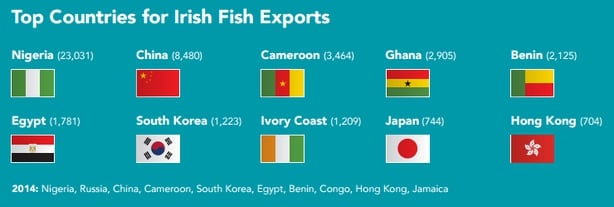| Mackerel, horse mackerel, blue whiting, herring, whelk and crab are the preferred products that are exported from Ireland |
According to figures from the Sea-Fisheries Protection Authority, China is the second-largest importer of Irish sea food, followed next by of Cameroon, Ghana, and Benin.
Irish fish exports to non-EU countries decreased last year, falling by nearly 7,000 tonnes from the 2014 figure of 56,068 tonnes.
The closure of the Russian market is cited as one of the main factors for this drop.

However, other markets remained buoyant last year, with a number of countries (including Nigeria, Cameroon, Ghana and Benin) increasing their volume of imports.
Chair of the Sea-Fisheries Protection Authority Susan Steele believes that export markets both inside and outside the EU are “vital to the realisation of the Government’s vision for Ireland’s seafood industry, as set out in Foodwise 2025”.
Ms Steele said: “Robust confidence in the quality and safety of Irish seafood is of critical importance to the maintenance of existing markets and to the expansion of the growing collection of third country markets.”
Mackerel, horse mackerel, blue whiting, herring, whelk and crab are the preferred products that are exported – while herring, whelk and crab have all recording a year-on-year increase.
In 2015 South Korea was the top non-EU market for Irish whelk while brown crab was the most popular export to China.
Nigeria was the largest export market for mackerel, horse mackerel, blue whiting and herring.
Oysters and lobsters were the most popular species imported by Hong Kong and Canada was the largest market for Irish salmon.
Frozen products make up 95% of total exports to non-EU countries.The remaining 5% comprises a large number of low volume high value consignments of live fish.





No comments:
Post a Comment